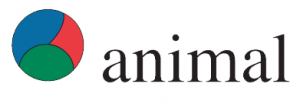Document type: scientific article available online before publication in Animal
Authors: Daniela Lovarelli, Giulietta Minozzi, Alon Arazi, Marcella Guarino, Francesco Tiezzi
Preview: This study evaluates the response of dairy cows to short and extended heat stressing conditions (from 1 to 28 days), as expressed in changes in their behavior. Due to climate change, heat stress and strong heat waves are frequently affecting productivity and behavior of dairy cows. In the five years under study from 2018 to 2022, two were characterized by extremely strong heat waves occurring in the region analyzed in this study (Northern Italy). The dairy cattle farm involved in this study is located in Northern Italy and includes about 1 600 Holstein Friesian lactating dairy cows. Phenotypic data were provided by the Afimilk system and compromised behavioral and productive traits. Behavioral traits analyzed were: activity, rest time, rest bouts, rest ratio, rest per bout and restlessness. Production traits were daily milk yield, average milking time, somatic cells count, fat percentage, protein percentage and lactose percentage. Climate data came from the NASA/POWER database. Heat stress was analyzed considering Temperature-Humidity Index (THI) averaged over 28 different time windows of continuous heat stress. Results showed that rest time and milk yield were the two traits most affected by the increased THI. Rest time was immediately affected by high THI, showing a marked decrease already from 1d window and maintaining this all over the other windows. Furthermore, results show that rest time and rest ratio were only slightly negatively correlated with milk yield (-0.14 and -0.15). In addition, heat stress has a different effect depending on parity and lactation stages on the studied traits. In conclusion, the results indicate that heat stress increases activity and compromises milk production, rest time and milk quality traits. Results further suggest that rest time can be a better parameter than activity to describe the effects of heat stress on dairy cattle. The novel approach used in this study is based on the use of different time windows (up to 28 days) before the emergence of undesired THI and allows to identify the traits that are immediately influenced by the undesirable THI values and those that are influenced only after a prolonged heat stress period.




